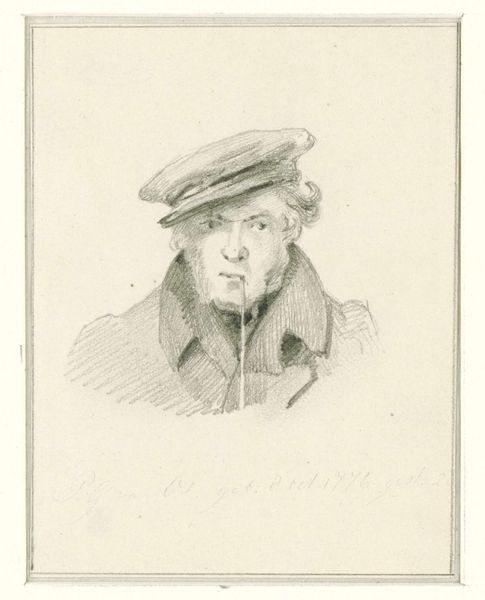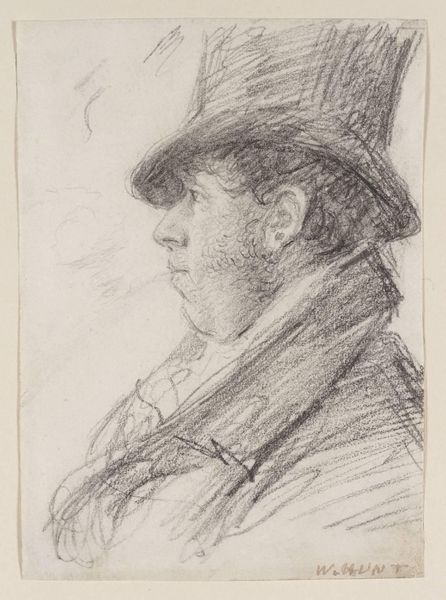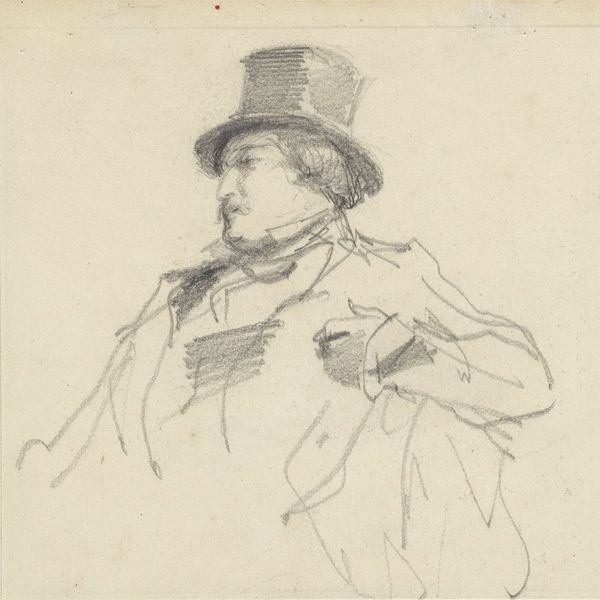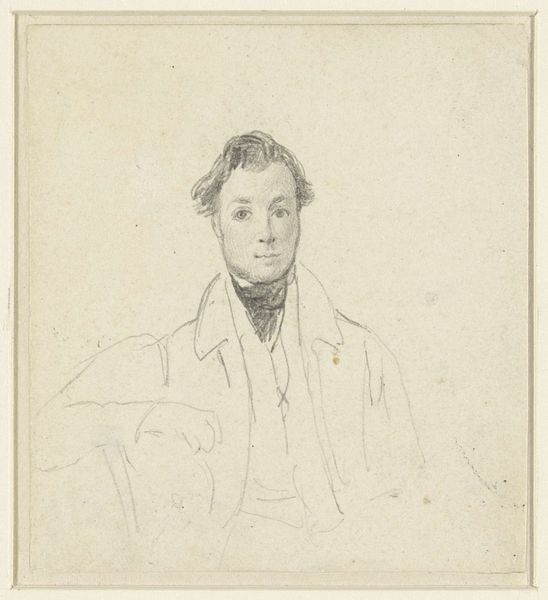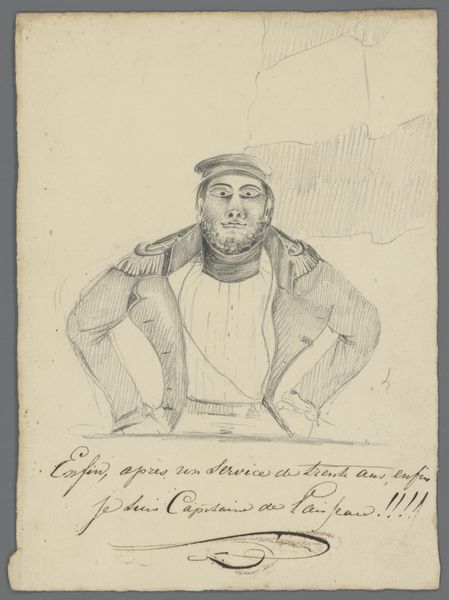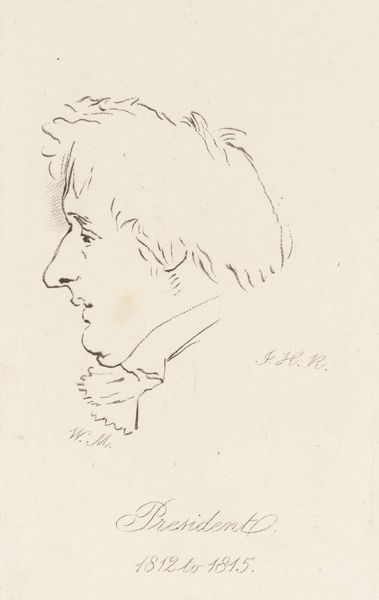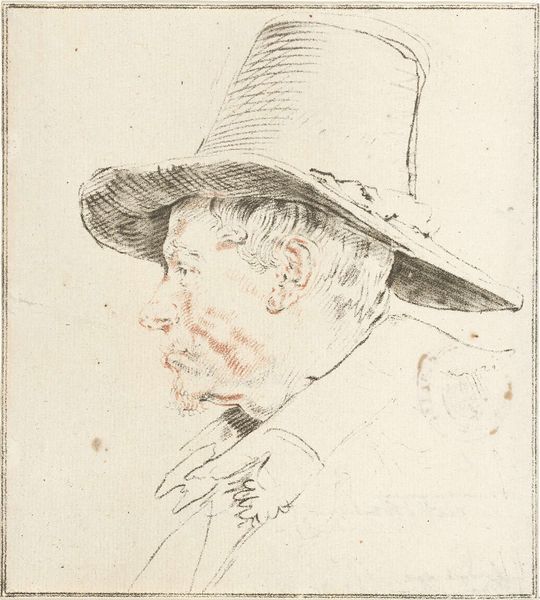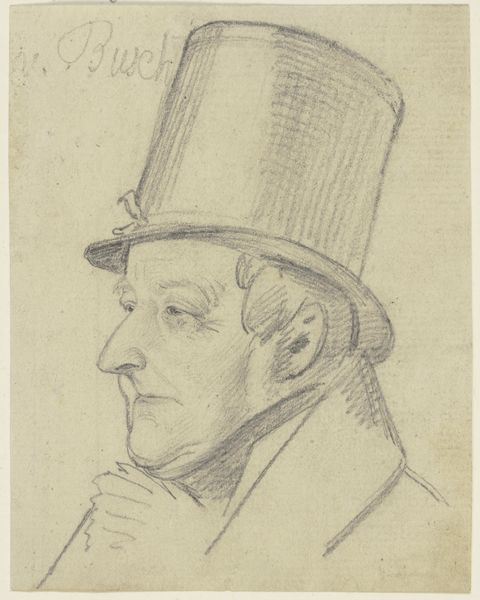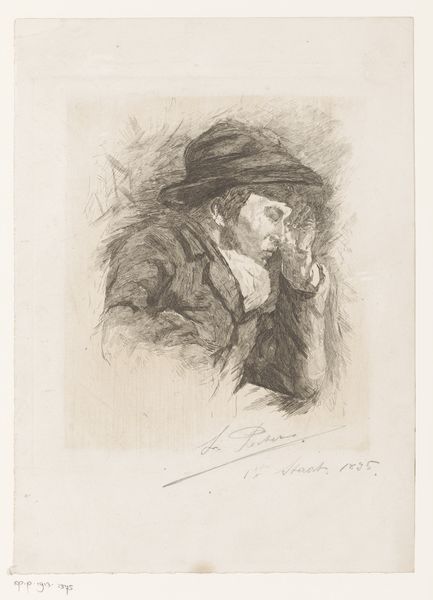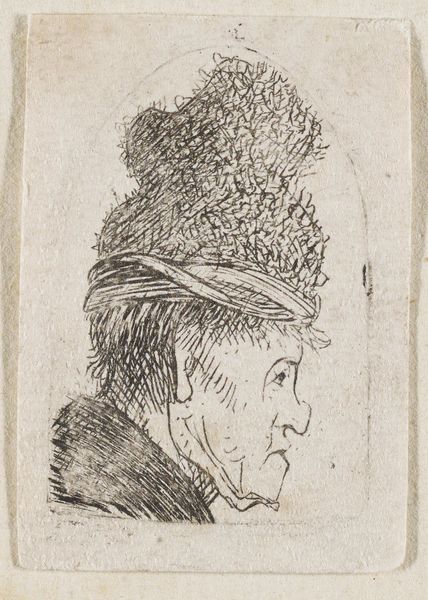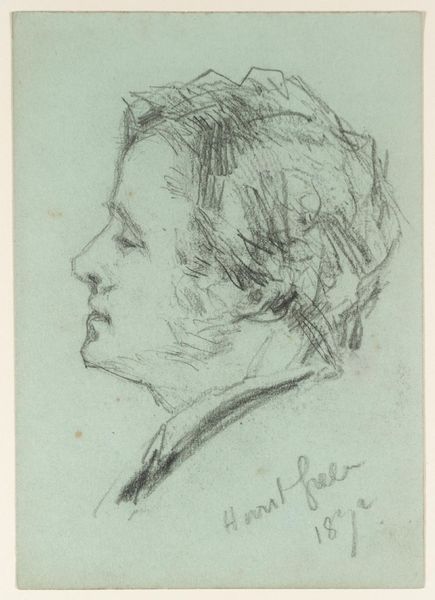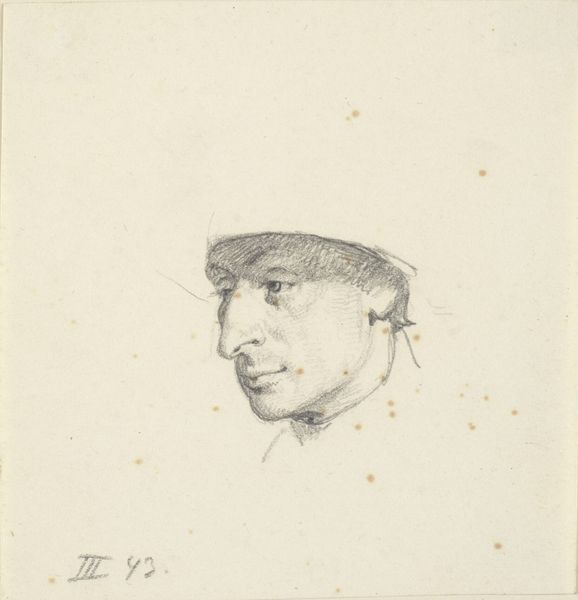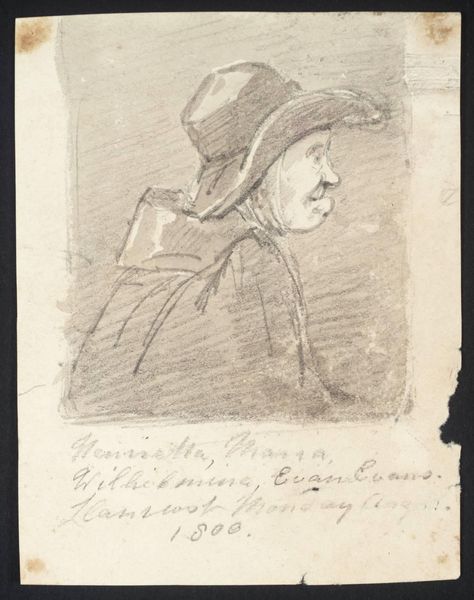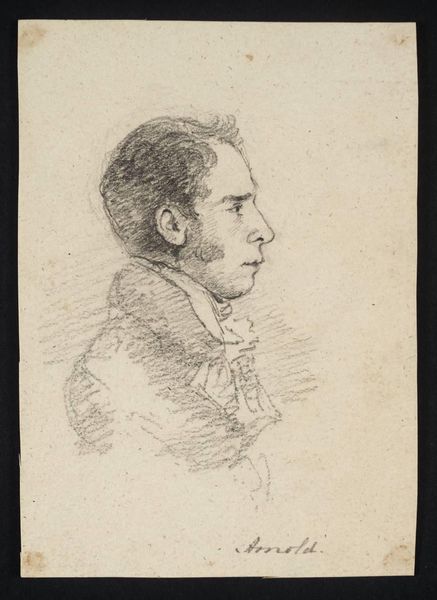
drawing, paper, pencil
#
portrait
#
drawing
#
amateur sketch
#
toned paper
#
light pencil work
#
pencil sketch
#
old engraving style
#
figuration
#
paper
#
personal sketchbook
#
romanticism
#
pen-ink sketch
#
pencil
#
sketchbook drawing
#
pencil work
#
sketchbook art
#
realism
Dimensions: height 84 mm, width 90 mm
Copyright: Rijks Museum: Open Domain
Editor: Here we have what seems to be a pencil drawing, "Portret van Pieter Gerardus van Os," created sometime between 1786 and 1889 by an anonymous artist. The light pencil work and toned paper give it an intimate, almost sketch-like quality. It feels like we’re peeking into the artist's personal sketchbook. What strikes you about this piece? Curator: Well, beyond its aesthetic qualities, it compels me to consider the social standing of portraiture itself during this era. Portraiture, particularly in drawing, straddled this interesting line between the intimate and the performative. Who was van Os? What role did artists like him play in constructing social narratives? Was it commissioned, or was it part of a more personal exploration? The nuances in light pencil work could symbolize shifting power dynamics. Editor: That's fascinating! I hadn’t thought about how the very act of portraiture reflects social structures. So, even a seemingly simple sketch can hold layers of meaning related to identity and power? Curator: Absolutely! Think about it: portraiture is rarely neutral. It often served to solidify or challenge established hierarchies. The fact that it's an anonymous artist is also interesting. Does it democratize the idea of creating portraits, and how is it accessible as a study compared to traditional painted portraits by master artists of that time? It's crucial to read art with an eye towards social, political, and economic currents. Editor: It really shifts my perspective! I tend to focus on the formal elements first, but you're highlighting how those elements are inherently intertwined with broader social issues. I will keep those socio-political dynamics in mind from now on when approaching artwork. Curator: Exactly. Art doesn't exist in a vacuum. Asking "Why *this*, why *now*, and for *whom*?" can unlock a whole new level of understanding and appreciation.
Comments
No comments
Be the first to comment and join the conversation on the ultimate creative platform.
